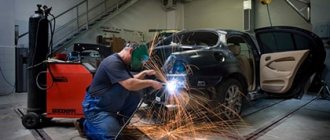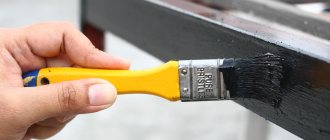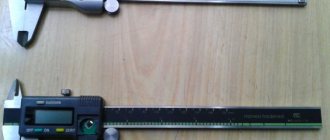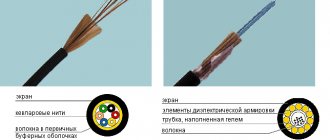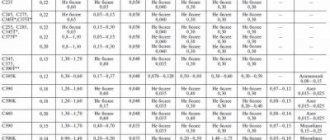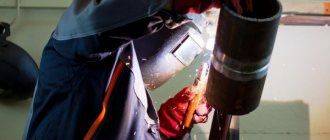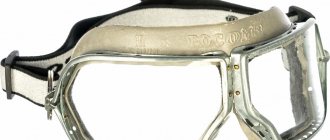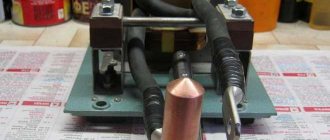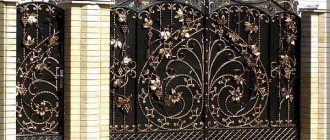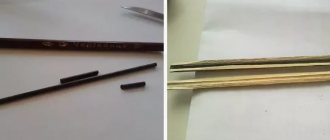Basic principles of budgeting
Usually the organization that will carry out the work handles the calculations. She must coordinate all her actions with the customer. The more detailed all processes and materials are described (down to the number and brand of screws), the better. However, often in practice a simplified version is used, where only the main types of work, units of measurement, quantities, prices and costs of processes are indicated.
An example of an estimate for renovation work on a room in an apartment in a simplified version:
| No. | Title of works | Units | Quantity | Price for 1 unit | Cost of work |
| 1 | Dismantling partitions | sq.m. | 50 | 350 | 17500 |
| 2 | Dismantling the balcony door | PC. | 1 | 1100 | 1100 |
| 3 | Installation of partitions (foam blocks) | sq.m. | 50 | 600 | 30000 |
| 4 | Plastering walls and partitions | sq.m. | 200 | 200 | 40000 |
| 5 | Double putty, priming and painting of prepared surfaces | sq.m. | 200 | 3000 | 34000 |
| 6 | Installation of a balcony door | PC. | 1 | 270 | 3000 |
| 7 | Plastering slopes (windows and doors) | sq.m. | 16 | 250 | 4320 |
| 8 | Improvement of slopes (putty, primer, painting) | sq.m. | 16 | 4000 | |
| Total according to estimate | 133920 | ||||
This sample estimate is applicable for making calculations for small-scale projects, and the entered data, if necessary, can easily be adjusted by agreement with the customer. It does not describe exactly how many bags of putty or cans of paint are required to complete the necessary work. The parties agree on the price per unit of measurement and the total cost, and the details (purchase of materials, transportation costs, removal of construction waste) are borne by the contractor.
Let's look at an example of an estimate compiled using a different method. In this case, all the necessary resources to complete the work at each stage are outlined.
At the request of the customer, an estimator or contractor can prepare several versions of estimates, taking into account various components (brand, price and quantity of materials, scope of work, quantity and technical indicators of equipment used, number of workers).
What is welding of metal structures: the essence of the work + its types
The term welding refers to a method of joining parts made of pure metals and alloys. The concept has gained the greatest popularity in such industries as industrial/domestic construction and mechanical engineering. In the 21st century, 90% of construction infrastructure uses welding as the main method of connecting components of structures.
1) A few words about metal structures
As is clear from the term, this is the general name for metal-type structures. In regulatory documentation, metal structures are designated as “MK”. Until the 20th century, construction used cast iron, but now structures made of steel and light alloys of non-ferrous and ferrous metals have come to the fore.
At first glance, it seems that metal structures are the standard of quality, but, like any material, metal structures also have their own characteristics and disadvantages, including. The table below will help you evaluate the material objectively.
| Advantages of metal structures | Disadvantages of MK |
| Relatively light weight. Thanks to optimal weight and strength characteristics, MKs have conquered the construction world. | Low corrosion resistance. Although alloying components are added to the alloys, which reduce the rate of manifestation of the corrosion process, it is still not possible to completely slow it down. Structures made of pure zinc or aluminum can solve the problem, but another problem arises - high cost and low strength. |
| Industrialism. The production of the material takes place in factories with a semi-automatic or fully automatic manufacturing process. Elimination of manual labor has a positive effect on the purchase price of MK | |
| Reliability. Alloying additives allow peak levels of load resistance to be achieved. | |
| Low permeability. Steel and other alloys of metal structures do not allow gases and liquids to pass through. Welding helps avoid leaks. | Weak fire resistance. Yes, MKs don’t burn directly, but melting is easy. In order to reduce the risks, metal structures are coated with special fire-resistant solutions and fire-resistant cladding is added to the walls. |
| Recycling. 95% of used metal structures are melted down at specialized plants. After which new parts are poured from them. |
Any structure needs proper maintenance, and these are additional costs that are borne by 1% of 99% of customers of such work. Salt, wastewater, aggressive gas environments and other negative factors reduce the operating life of the MK by 3-7 times, and instead of a 40-year guarantee of the strength of some MKs, we will get no more than 5.
The table below will tell you about the classification of MK.
| Classification parameter | Components |
| Assembly + manufacturing | Welding |
| Forged | |
| Screw | |
| Riveted | |
| Stamped | |
| Combined | |
| Application | Stationary |
| Collapsible | |
| Transformed | |
| Purpose | Fencing |
| Bearers | |
| Material | Steel |
| Cast iron | |
| Aluminum |
If we turn to the nature of the connection of elements of metal structures, then there are 3 - welded, threaded and rivet. It is advisable to repair metal structures by welding - this is the only effective method to achieve optimal strength parameters in a short repair time.
2) Types of welding of metal structures
Now you can count about 120 types of welding of metal structures.
Welding joints have become widespread due to their low cost and speed of repair work. The basic condition for use is the need for a strong connection of structural elements, including a tight fit of parts to each other. Achieving water-gas tightness using rivet or thread repair is more difficult, longer and more expensive. The table below will tell you about the main types of welding.
Diffusion welding of metals
| Welding type MK | Description |
| Dugovaya | The electrode moves pointwise. Application medium: air and water. The electrode can be either melting (with argon as protection) or non-melting, and the process itself is divided into 2-arc and multi-arc. |
| Electroslag | Thermal energy passes through the slag, causing it to melt and join the metal elements. The welding method is often used when working with thick layers of metal. |
| Gas | Using gas, the edges of the connecting parts are heated and they are connected. It is rational to use on thin layers of metal (less than 0.5 centimeters). This type of welding is widely used in shipbuilding and mechanical engineering. |
| Termite | The process is organized through an aluminothermic reaction. Powdered aluminum is used as fuel. It works well when welding railway tracks, and due to the ability to work in a vacuum, thermite welding is also used in high voltage systems. |
| Contact | Synonym for combined. The current passing through the contacts of the parts being connected heats them, and the pressure connects them together. As a result of resistance welding, permanent joints are obtained, which makes it possible to widely use the welding method in industry, where high-quality connection of elements is necessary. |
If we consider the welding process in general terms, then we should distinguish 3 directions - thermal, thermomechanical and purely mechanical. The last type is the least effective, because it is based on mechanical processes of interaction between bodies (cold welding), and therefore the strength and impermeability of the resulting joints is several times lower than other connection methods.
Important: to correctly select the type of welding, a person is required to take into account the grade of material, the operating conditions of the structures and the availability of equipment. When choosing the latter, it is necessary to take into account the spatial position + length of the seam, the type of current used and the parameters of the welding mode.
Cast iron is considered a particularly difficult material to weld. The graphite inside the alloy is extremely unstable, and cracking during operation is common. The main method of welding cast iron parts in metal structures is an arc welding machine with TsP-4 or non-consumable tungsten/graphite electrodes.
3) Standardization of time for assembling metal structures for welding
When a person seeks a service from a welder or an organization working in a niche, he expects to hear exact deadlines for completing the work.
Few people understand that there is no clear calculation for the standards under consideration. When considering deadlines, departments of organizations work with such a concept as operational time. Operational time is the period of performance of a labor operation for each unit of metal structure based on the average standards specified in welding technologies. For each method of connecting MC elements, the operating time is different.
Each company independently calculates time standards for assembling metal structures for welding. In most cases, between 5 and 20 variables are involved in accounting.
Basic parameters for calculating time per assembly unit:
- design complexity;
- weight;
- dimensions;
- number of connected elements;
- tools and devices used.
- things like that.
The time standards for assembling metal structures for welding in 80% of construction organizations consist of 4 points. Each of them will be described in more detail in the table below.
| Time | Peculiarities |
| Basics | The time allocated for coordinating the actions of employees, the process of directly connecting and fixing together the components of a unit of a part that will be sent for welding. |
| Auxiliary | Integrated, and more often including a sub-stage of work in the main preparation process. Used when work circumstances complicate matters - unfavorable weather conditions or special wishes of the customer. The time limit for the auxiliary stage is calculated |
| Organizational and technical | Allotted for welders to rest and have a snack/smoke break. According to labor safety standards, this is 10% of operational time for the welding process of one unit of part. |
| Preparatory - final | The timing varies depending on the complexity of the parts that are sent for welding. The second important factor is the organization of the labor process on the part of the supplier of metal structures repair services. Eg. For a structural unit of 50 parts, 20 minutes are given. |
There are 3 ways to calculate operational time - timing, analytics and a combination of the two previous methods. The first definition option is considered optimal - timing. The assembler is tested for 1-3 hours on the speed of welding the same part. Sampling excludes the first 10-20 repetitions and the last 10 - this allows you to avoid inaccurate data associated with the addition of unnecessary steps and transitions on the part of the welder. After 20-40 minutes the process will be optimized intuitively by workers.
In what form are estimate documents drawn up?
For different types of work, different forms of drawing up financial documents are used. Let us pay attention to an example of an estimate for design and survey work (design and survey work), which is drawn up in accordance with form 3p. It is an annex to the contract between the parties, the cost here is determined by labor costs. Form 3p estimate is used to calculate the cost of research, design, environmental engineering, engineering and survey work.
How to calculate the cost of welding services
For many specialists, purchasing a welding machine and eventually learning welding at a professional level is not the least difficulty. And subsequently, many come to provide welding services or simply do “hack jobs” in addition to their main job. And here many people are faced with the question of how to calculate the cost of welding work, adhere to production and factory pricing standards, or determine it “by eye.” In this article I will provide a formula and a few tips that may be useful to you and will help you initially decide on prices for types of services related to the welding process.
Main pricing factors
Let me start with the fact that you can determine a number of factors that will directly affect the cost of a product or service created by the hands of a welder, namely:
- Scope of work carried out
- Complexity of work
- Type of welding
- Type of consumables required during the welding process
And these are not all the points, but I still want to convey a simpler price formation formula that almost every welder can use, even if he has never dealt with pricing and is far from humanitarian economics.
twork – time spent on work
td – time spent on the road
ST – welder hourly rate
Zd – travel costs (fuel)
Zmat – costs of consumables
АО – equipment depreciation
Thus, the cost of work = (time spent on work + time spent traveling to the client) * specialist’s working rate + (travel costs + material costs + equipment depreciation)
I gave the simplest formula for calculating the cost of services, from which it will be somewhat problematic to express the exact cost of a centimeter of a weld or a welded pipe joint, the standards that organizations and services often use. But, using it to calculate the cost of not very complex simple work is quite practical.
How to gain a foothold in the welding services market
You need to advertise yourself! You are a welder, your clients should know about your capabilities. Advertise yourself wherever possible, on websites on the Internet, in local advertising newspapers, on fences, poles, trees. Your advertising should be everywhere where people go. A friend of mine is engaged in digging wells, he writes his advertisements with a marker on plastic, hangs them on trees in dacha cooperatives, near bus stops in private sectors. He says that this type of advertising works fine until someone removes it. A few tips that will help you gain a foothold in the welding services market in your region and attract more clients:
- Always be aware of welding service prices in your local market. Start using the Avito website. You should offer your welding services on the Avito website, on the From Hand to Hand website, as well as in advertising newspapers in your city. Look at prices from advertisements on the Internet, ask familiar welders and clients. This will help you create your own hourly rate, depending on your professional skills.
- If there is quite a large demand for your services, and there is not enough time for all clients, you should think about an assistant or raise your prices. It is more priority to provide a discount to the client so that he will contact you next time than to work for a low fee.
- Sometimes, to simplify the assessment of the cost of work, you can calculate the approximate consumption of materials for the work and ask the client to purchase them himself. Thus, the cost of the final product of work for the client will become more clear.
- You can increase the hourly rate by 1.5-3 times when performing welding work in cramped conditions, at heights, in trenches, pits, etc., etc.
Computer programs for financial calculations
Nowadays, many software products have been developed that can be used to prepare various financial documents. With a certain degree of convention, they can be divided into two groups:
- Free. They can be freely found on the Internet, on thematic sites. Such programs have minimal functionality, allow you to perform the simplest calculations and do not have the function of updating regulatory frameworks.
- Professional. They are used by specialists and require the purchase of a software and service product. The most popular and functional are “Smeta.ru”, “GRAND Smeta”, “1C: Contractor”, “Turbosmeta”, etc.
However, in the familiar Microsoft Excel program, you can also easily create an estimate template for the implementation of the required project.
To fill out the estimate, just insert the necessary indicators into the created form, all calculations will be carried out automatically.
If the project requires a large amount of various work and significant investments, then you should not undertake such serious calculations yourself without special knowledge. It is better to turn to specialists who are proficient in modern production technologies and the current situation in the building materials market. They will be able to give an objective picture of the expected costs and offer options for its possible optimization. By saving on the services of an estimator, you can lose more and not realize your plan at all.
What determines the cost of welding work?
To competently draw up an estimate, you will need to understand the basic principles of its formation, that is, know what factors influence pricing. There are a large number of objective circumstances that have a direct or indirect impact on the formation of the final cost of services. But at first it is enough to know the basic principles.
The main factor is the volume of work. This is logical, since the longer it takes to complete a task, the higher the cost of the services provided. In addition to volumetric indicators, it is necessary to take into account qualitative ones - the complexity of the work, the type of welding, the quantity and types of consumables that need to be used during the work process. For example, electric arc welding will be much cheaper than semi-automatic welding using a tungsten rod in an inert environment. Below is a formula that will make it much easier to determine the cost of welding services for metal workpieces. It is great for determining the tariff for a specific type of work or the cost of the entire volume. But first you need to familiarize yourself with generally accepted valuation methods.
Examples of estimates for construction and installation work
Estimate for door replacement - download
Estimate for the construction of a veranda - download
Estimate for major repairs of the power supply system - download
Estimate for soft roof repairs - download
Estimate for façade repairs - download
Estimate for installation of LAN indoors - download
Estimate for land planning and foundation installation - download
What determines welding prices?
Well, firstly, if the work has to be done in difficult and cramped conditions, in an unheated room, at a height, etc. Therefore, the cost of welding work may fluctuate in any particular case. Just as was said above, everything largely depends on the qualifications of the welder, since an experienced master of his craft will never go cheap.
Now let’s look at the prices for welding the most popular metal structures:
- To weld 1 m² of gate or grille costs about 1,365 rubles;
- Welding a fence using chain-link mesh costs about 800 rubles per linear meter.
When welding commercial and warehouse equipment, the price tag for welding work increases significantly. At the same time, the prices for welding gates and fences that were indicated above do not include the rolled metal itself. That is, the customer provides it independently.
Comments on “Examples of estimates” – 2
Hello! I would like to know if you can answer the following question: When drawing up an estimate for the reconstruction of the ventilation system in a chemical laboratory using plastic air ducts, the Customer, instead of the price from the 20th collection (laying air ducts), used the price from the 12th collection. Arguing that in the 20th collection only metal air ducts are taken into account (although they are calculated). Is the Customer right? Thanks in advance.
Hello! The customer’s logic is not entirely clear when, for laying an air duct, he asks to use the price not from the collection 20 “Ventilation and air conditioning”, but the price from the collection 12 “Roofs”. According to the existing description of the situation, the customer is wrong. But you did not say what specific price and at what price the customer proposed to change it, as well as what work was actually being carried out, perhaps then the logic of his demand will become clearer. If the customer is a private person, he has the right to set his own conditions. If the condition is to reduce the cost of work, and you are satisfied with this condition, then it is better to choose the correct method, for example, a lowering index or another. If the issue in this case is fundamental for you and plays a significant role in the cost, then you have the right to defend the use of prices according to Collection 20 or use the service of an official request to the regional pricing center in construction. You will be able to refer to the official response received in a dispute with the customer.
Factors influencing price indicators
In order for the estimate to be calculated correctly, a clear understanding of the factors influencing the cost is necessary. Everything from the weather to the materials you use can affect the price of welding procedures.
But we will focus on those that really matter for welding.
The first step is to determine the scope of welding tasks. The type of welding chosen is important, as is the volume of consumables.
Arch welding using electrodes will be much cheaper than labor on a semi-automatic machine using tungsten rods and a gas structure.
There is a special formula that can be used to correctly calculate the price of your work. Using it, you will be able to calculate the correct tariff for the customer. It is worth dwelling on the methods that are relevant when assessing welding tasks.
